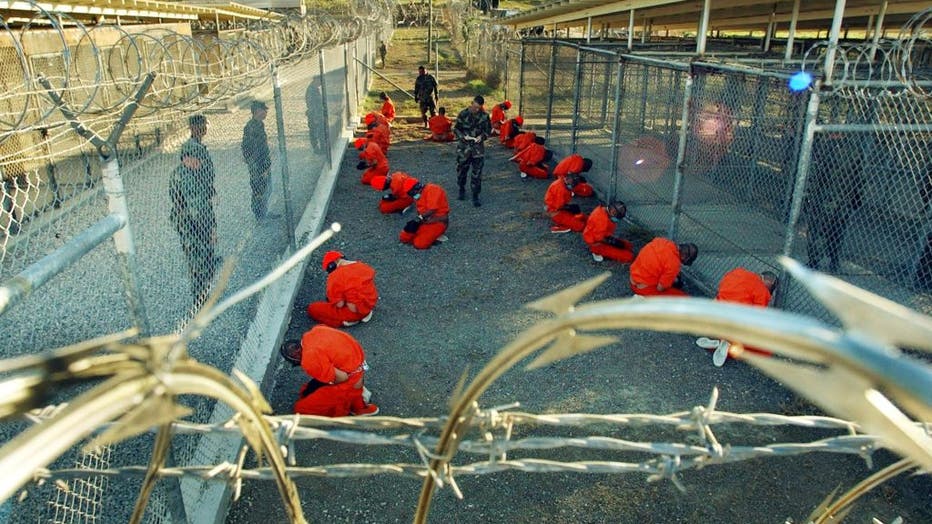Trump orders Guantanamo Bay detention center for migrants after signing Laken Riley Act
President Trump signs Laken Riley Act into law
President Donald Trump signed his first bill into law on Wednesday. The Laken Riley Act requires the detention of unauthorized migrants accused of theft and violent crimes.
President Donald Trump has announced plans to open a detention center at Guantánamo Bay, Cuba, to house up to 30,000 migrants living illegally in the United States.
This move aligns with the recent signing of the Laken Riley Act, which mandates the detention of unauthorized immigrants accused of theft and violent crimes.
In the past, Guantánamo Bay has been used by the U.S. government since 2002 to detain suspects linked to terrorist organizations like the Taliban, al-Qaeda, and other militant groups.
The detention camp, located on a U.S. naval base in Cuba, was established to hold individuals captured during the War on Terror, often without trial or due process. While some detainees have been released or transferred, the facility remains controversial for its use of indefinite detention and allegations of human rights abuses.

FILE - In this handout photo provided by the U.S. Navy, U.S. Military Police guard Taliban and al Qaeda detainees in orange jumpsuits January 11, 2002 in a holding area at Camp X-Ray at Naval Base Guantanamo Bay, Cuba during in-processing to the temp (Photo by Petty Officer 1st class Shane T. McCoy/U.S. Navy via Getty Images)
What is the Laken Riley Act?
The backstory:
The Laken Riley Act—named after a 22-year-old Georgia nursing student killed by an undocumented Venezuelan immigrant—marks Trump’s first signed legislation since returning to office. The law mandates the detention of undocumented individuals arrested for crimes such as theft, assaulting law enforcement, or causing injury or death.
It also allows state attorneys general to sue the federal government over immigration enforcement decisions, giving states greater influence over deportation policies.
Critics argue that the law could lead to mass detentions, disproportionately targeting noncitizens for minor offenses. Immigrant rights groups have warned of costly expansions of immigration detention facilities and potential violations of due process rights.
Why Guantánamo Bay?
Big picture view:
Trump’s decision to use Guantánamo Bay for migrant detention is unprecedented. Since its establishment in 2002, the facility has primarily housed terrorism suspects, many held without trial.
The use of the base for migrants raises questions about legal protection, conditions of confinement, and the broader implications of treating immigration enforcement through a national security lens.
Historically, Guantánamo Bay has been a focal point of international scrutiny. Former President Barack Obama attempted to close the facility, citing human rights concerns, but congressional opposition prevented its full shutdown.
The Trump administration’s plan to repurpose it for mass migrant detentions further complicates the debate over its future.
What’s next for immigration enforcement?
What's next:
Trump has promised the "largest deportation effort in U.S. history," and the use of Guantánamo Bay signals a shift toward more aggressive enforcement. The administration has already moved to reinstate policies aimed at expediting deportations, restricting asylum claims, and cracking down on so-called sanctuary cities.
Legal challenges are likely. Civil rights groups have indicated they may challenge both the Laken Riley Act and the use of Guantánamo Bay for immigration detention, arguing they could lead to unlawful detentions and human rights violations.
Meanwhile, the logistics of housing up to 30,000 migrants at a naval base will require significant resources. Immigration authorities have not disclosed a timeline for transferring detainees, but the move is expected to escalate political battles over immigration policy.
The Source: This story is based on reporting from the Associated Press, statements from the White House, and analysis from legal experts and immigration advocacy groups.

